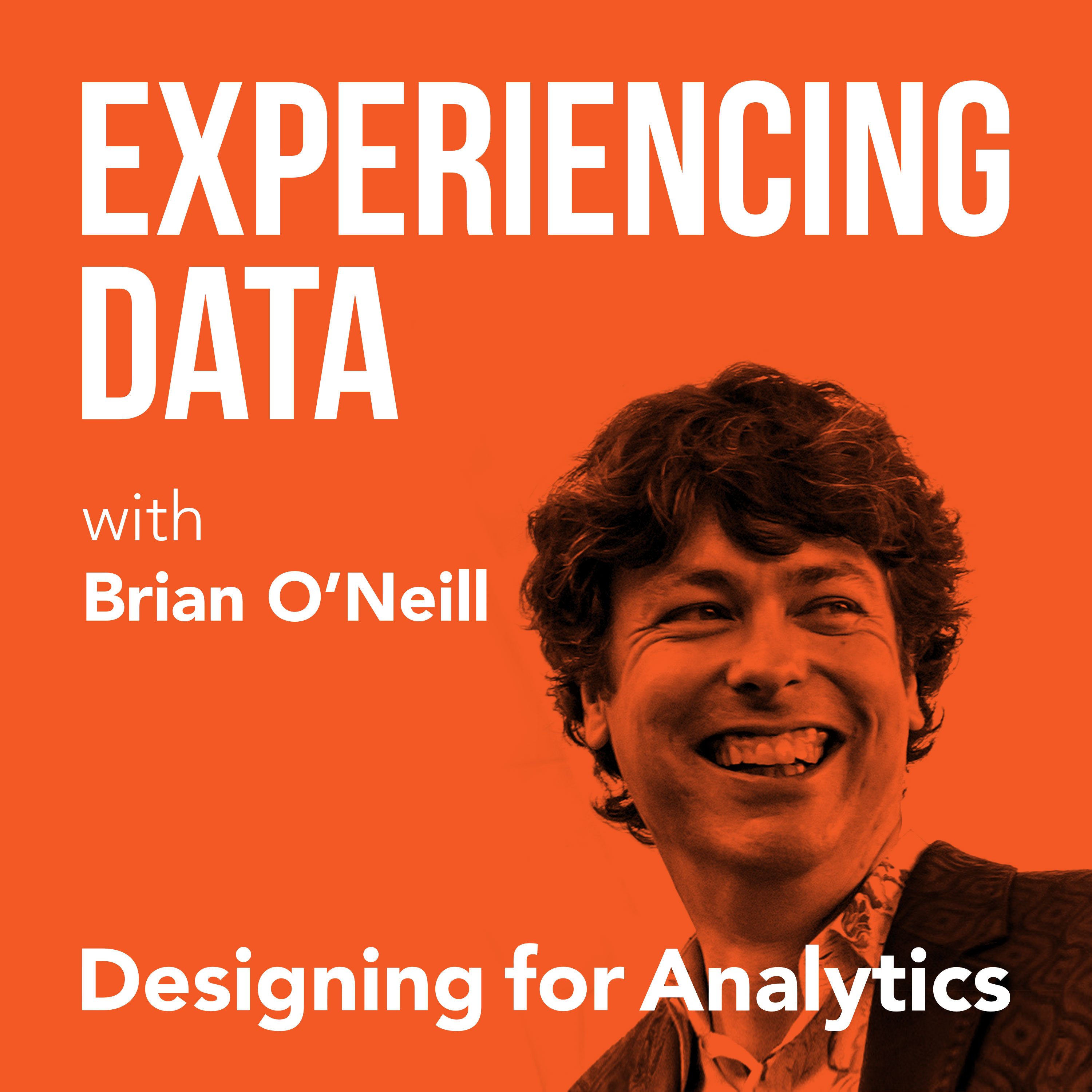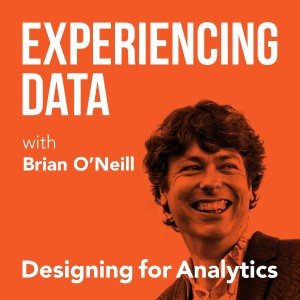

154.7K
Downloads
185
Episodes
Is the value of your enterprise analytics SAAS or AI product not obvious through it’s UI/UX? Got the data and ML models right...but user adoption of your dashboards and UI isn’t what you hoped it would be?
While it is easier than ever to create AI and analytics solutions from a technology perspective, do you find as a founder or product leader that getting users to use and buyers to buy seems harder than it should be?
If you lead an internal enterprise data team, have you heard that a ”data product” approach can help—but you’re concerned it’s all hype?
My name is Brian T. O’Neill, and on Experiencing Data—one of the top 2% of podcasts in the world—I share the stories of leaders who are leveraging product and UX design to make SAAS analytics, AI applications, and internal data products indispensable to their customers. After all, you can’t create business value with data if the humans in the loop can’t or won’t use your solutions.
Every 2 weeks, I release interviews with experts and impressive people I’ve met who are doing interesting work at the intersection of enterprise software product management, UX design, AI and analytics—work that you need to hear about and from whom I hope you can borrow strategies.
I also occasionally record solo episodes on applying UI/UX design strategies to data products—so you and your team can unlock financial value by making your users’ and customers’ lives better.
Hashtag: #ExperiencingData.
JOIN MY INSIGHTS LIST FOR 1-PAGE EPISODE SUMMARIES, TRANSCRIPTS, AND FREE UX STRATEGY TIPS
https://designingforanalytics.com/ed
ABOUT THE HOST, BRIAN T. O’NEILL:
https://designingforanalytics.com/bio/
Episodes

Tuesday Nov 15, 2022
Tuesday Nov 15, 2022
Today I’m chatting with Indi Young, independent qualitative data scientist and author of Time to Listen. Indi explains how it is possible to gather and analyze qualitative data in a way that is meaningful to the desired future state of your users, and that learning how to listen and not just interview users is much like learning to ride a bicycle. Listen (!) to find out why pushing back is a necessary part of the design research process, how to build an internal sensor that allows you to truly uncover the nuggets of information that are critical to your projects, and the importance of understanding thought processes to prevent harmful outcomes.
Highlights/ Skip to:
- Indi introduces her perspective on analyzing qualitative data sets (00:51)
- Indi’s motivation for working in design research and the importance of being able to capture and understand patterns to prevent harmful outcomes (05:09)
- The process Indi goes through for problem framing and understanding a user’s desired future state (11:11)
- Indi explains how to listen effectively in order to understand the thinking style of potential end users (15:42)
- Why Indi feels pushing back on problems within projects is a vital part of taking responsibility and her recommendations for doing so effectively (21:45)
- The importance Indi sees in building up a sensor in order to be able to detect nuggets clients give you for their upcoming projects (28:25)
- The difference in techniques Indi observes between an interview, a listening session, and a survey (33:13)
- Indi describes her published books and reveals which one she’d recommend listeners start with (37:34)
Quotes from Today’s Episode
- “A lot of qualitative data is not trusted, mainly because the people who are doing the not trusting have encountered bad qualitative data.” — Indi Young (03:23)
- “When you’re learning to ride a bike, when you’re learning to decide what knowledge is needed, you’re probably going to burn through a bunch of money-making knowledge that never gets used. So, that’s when you start to learn, ‘I need to frame this better, and to frame it, I can’t do it by myself.’” – Indi Young (11:57)
- “What you want to do is get beyond the exterior and get to the interior, which is where somebody tells you what actually went through their mind when they did that thing in the past, not what’s going through their mind right now. And it’s that’s a very important distinction.” – Indi Young (20:28)
- “Re: dealing with stakeholders: You’re not doing your job if you don’t push back. You built up a lot of experience, you got hired, they hired you and your thinking and your experience, and if what went through your mind is, like, ‘This is wrong,’ but you don’t act on it, then they should not pay you a salary.” – Indi Young (22:45)
- “I’ve seen a lot of people leave their perfectly promising career because it was too hard to get to the point of accepting that you have to network, that I’m not going to be that one-in-a-million person who’s the brilliant person with a brilliant idea and get my just rewards that way.” – Indi Young (25:13)
- “What’s really interesting about a listening session is that it doesn’t—aside from building this sensor and learning what the techniques are for helping a person get to their interior cognition rather than that exterior … to get past that into the inner thinking, the emotional reactions, and the guiding principles, aside from the sensor and those techniques, there’s not much to it.” – Indi Young (32:45)
- “And once you start building that [sensor], and this idea of just having one generative question about the purpose—because the whole thing is framed by the purpose—there you go. Get started. You have to practice. So, it’s like riding a bike. Go for it. You won’t have those sensors at first, but you’ll start to learn how to build them.” – Indi Young (36:41)
Links Referenced:
- Time to Listen: https://www.amazon.com/Time-Listen-Invention-Inclusion-Assumptions/dp/1944627111
- Mental Models: https://www.amazon.com/Mental-Models-Aligning-Strategy-Behavior/dp/1933820063
- Practical Empathy: https://www.amazon.com/Practical-Empathy-Collaboration-Creativity-Your/dp/1933820489
- indiyoung.com: https://indiyoung.com
- LinkedIn: https://www.linkedin.com/in/indiyoung/
- Instagram: https://www.instagram.com/indiyoung_/
No comments yet. Be the first to say something!